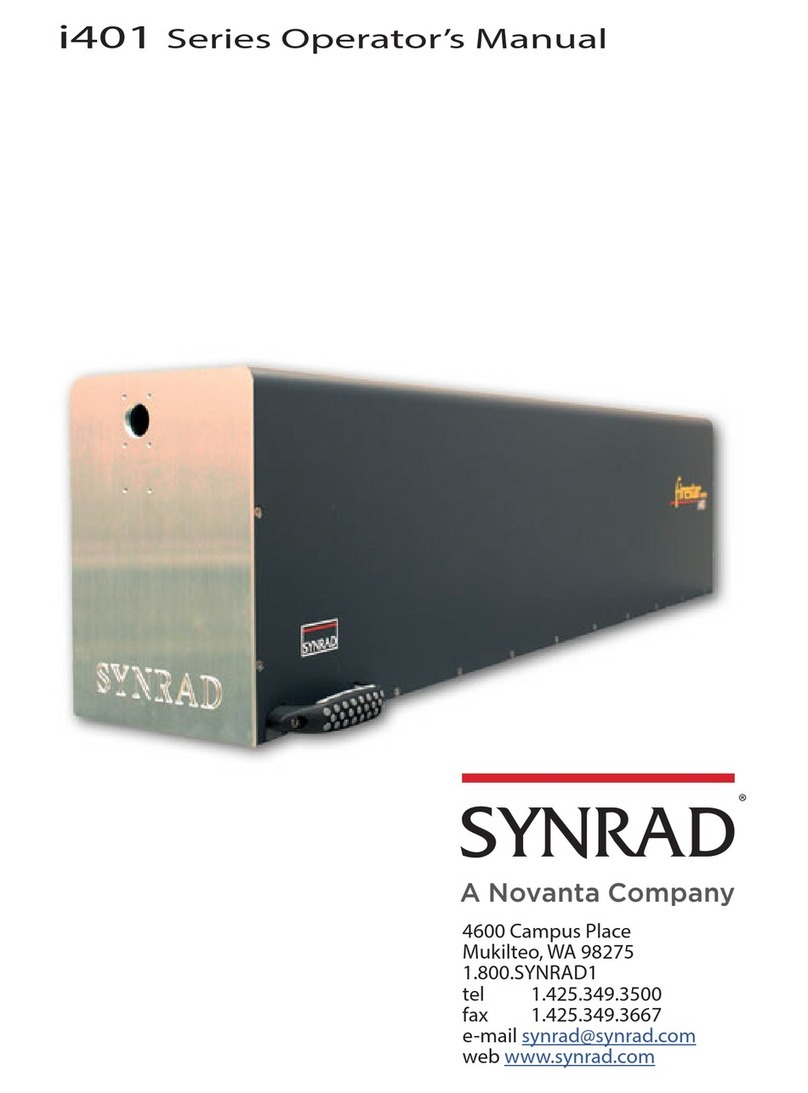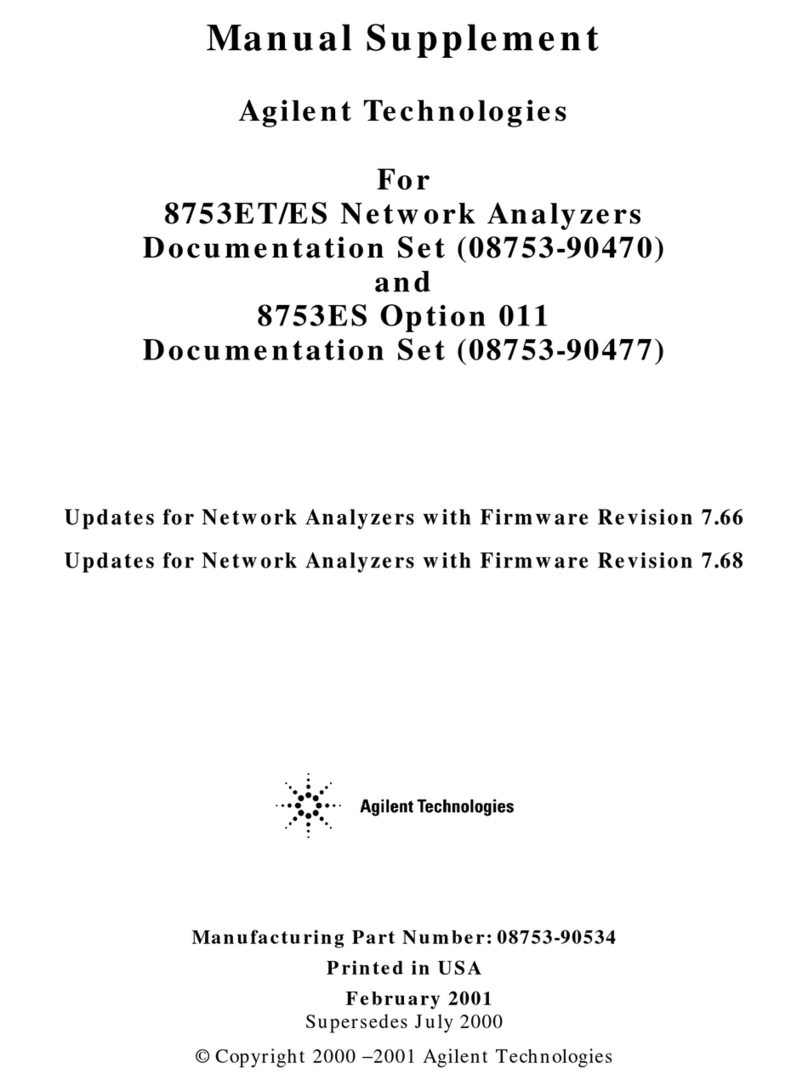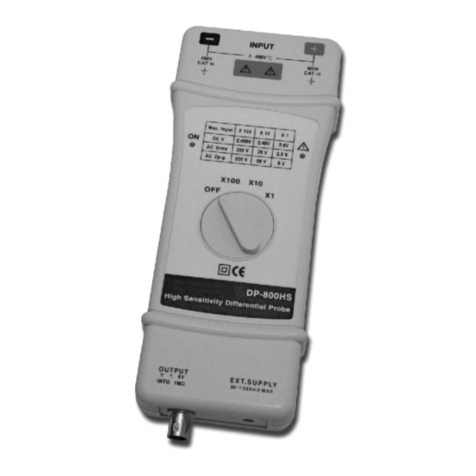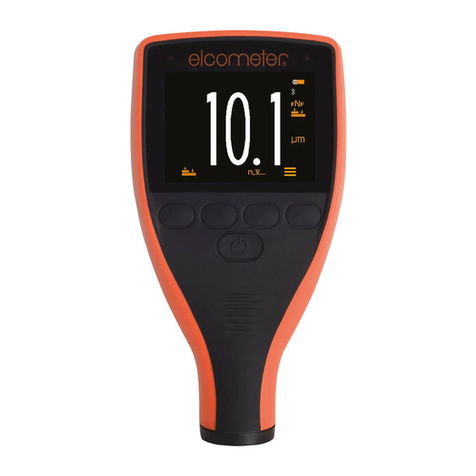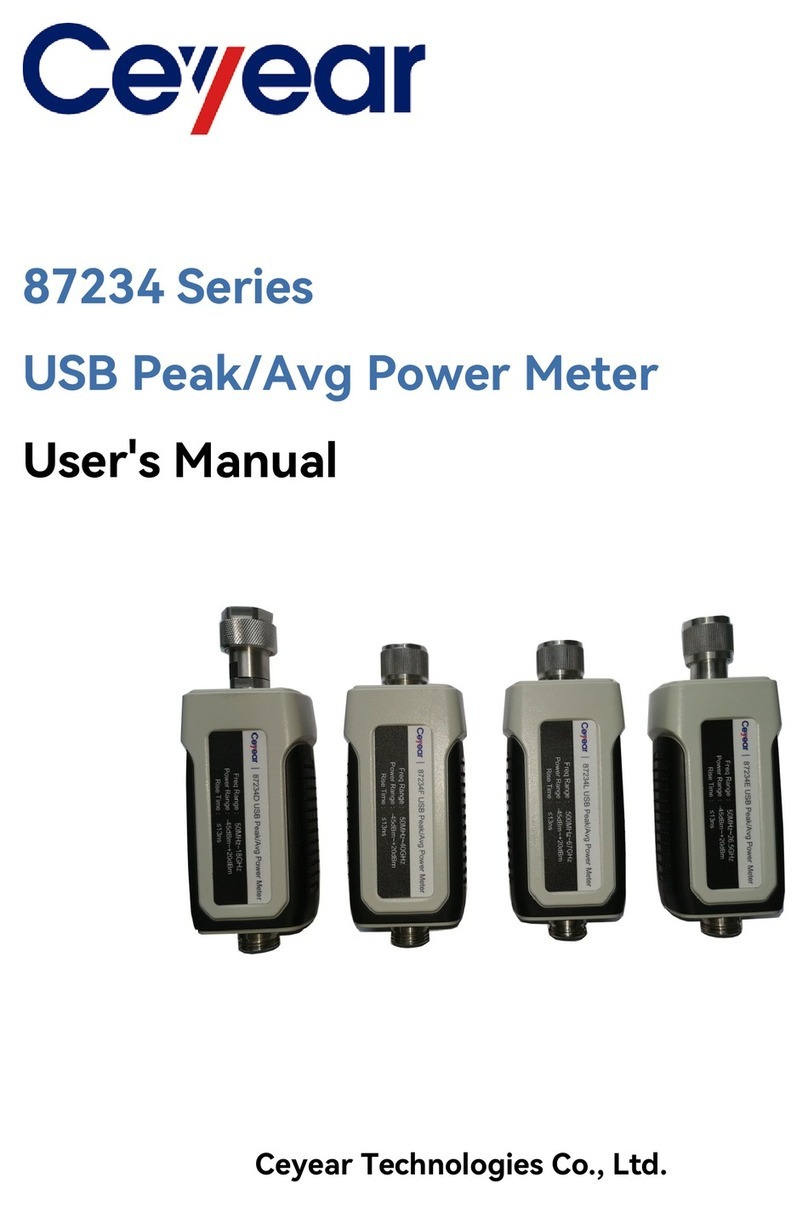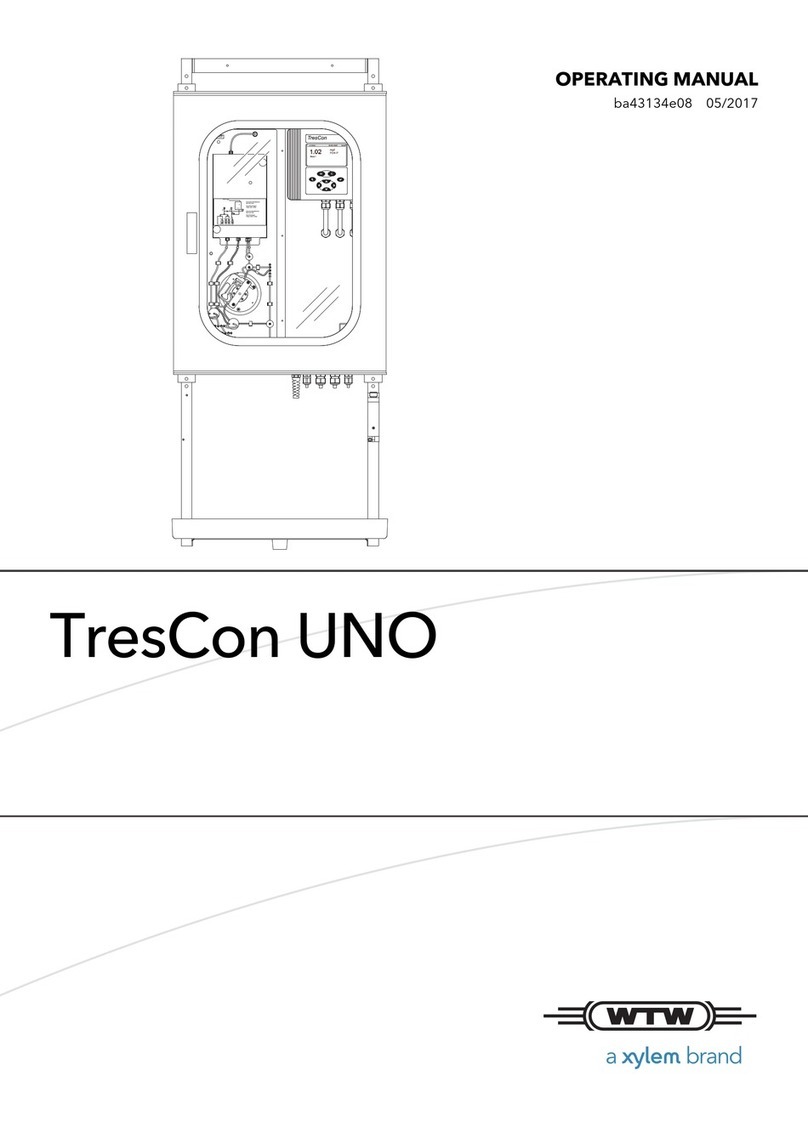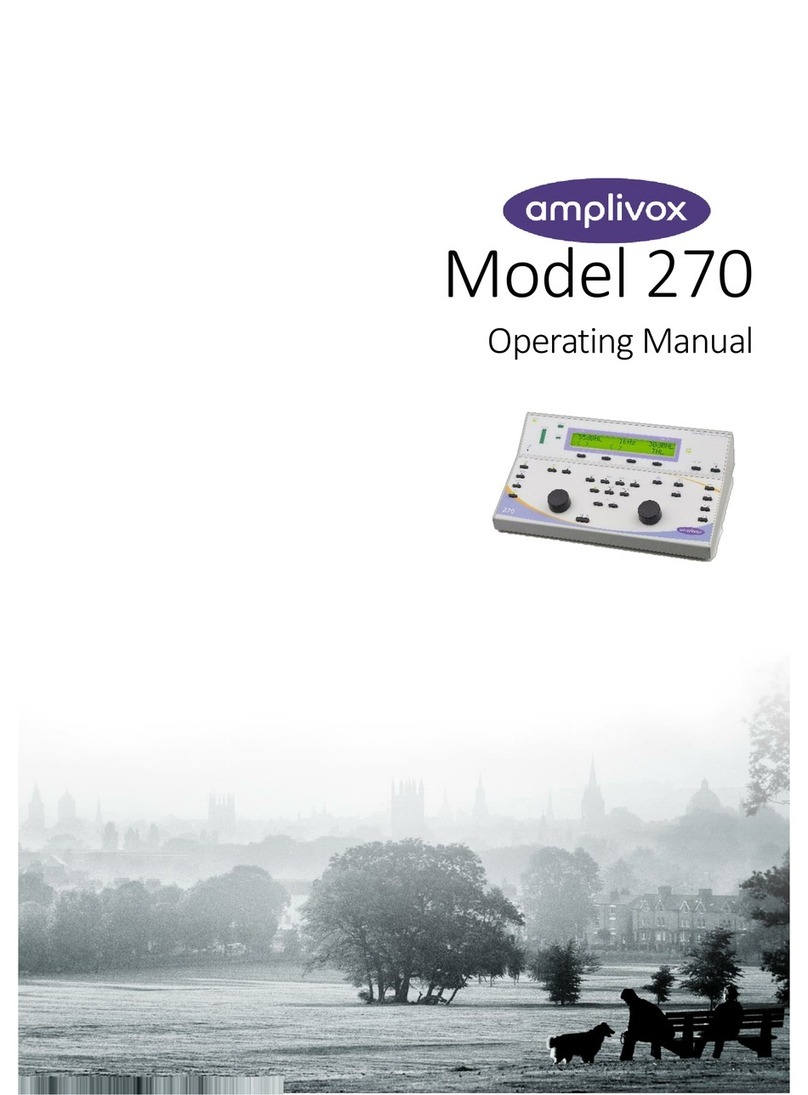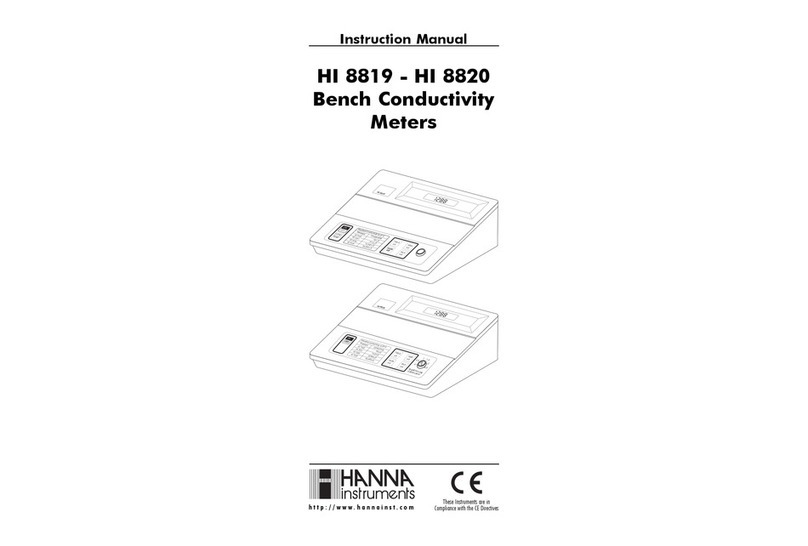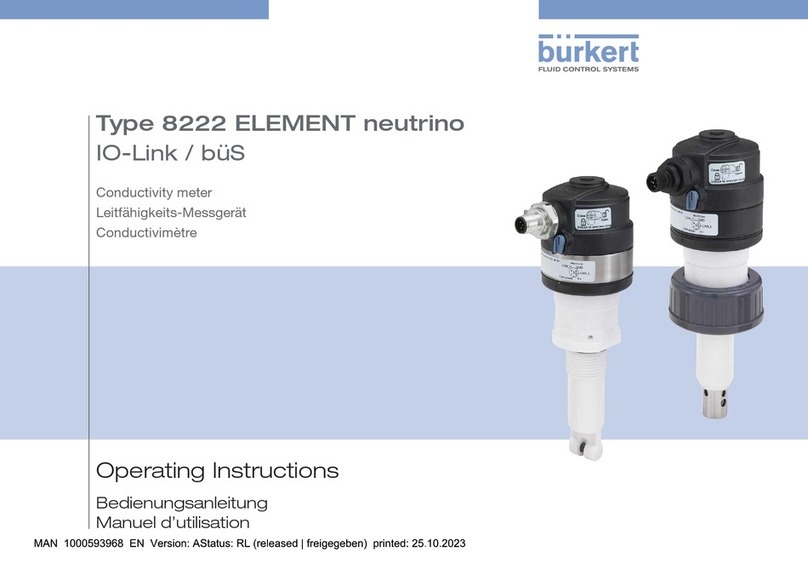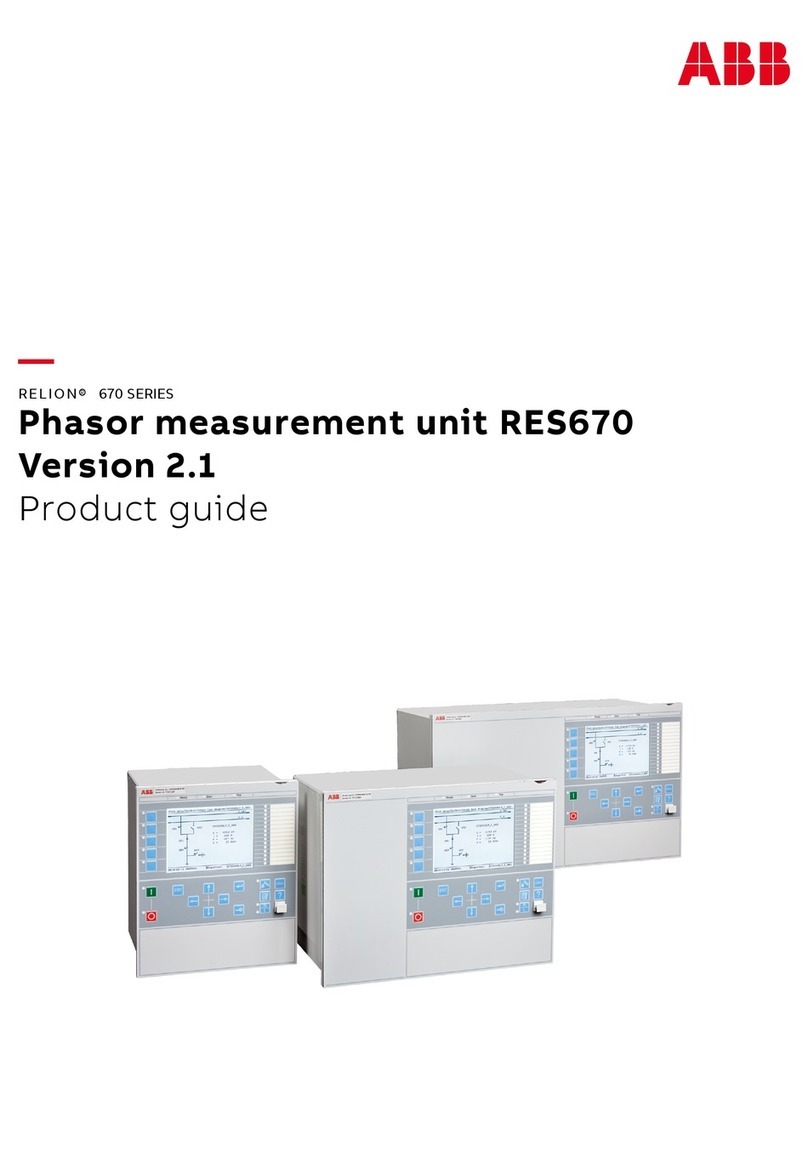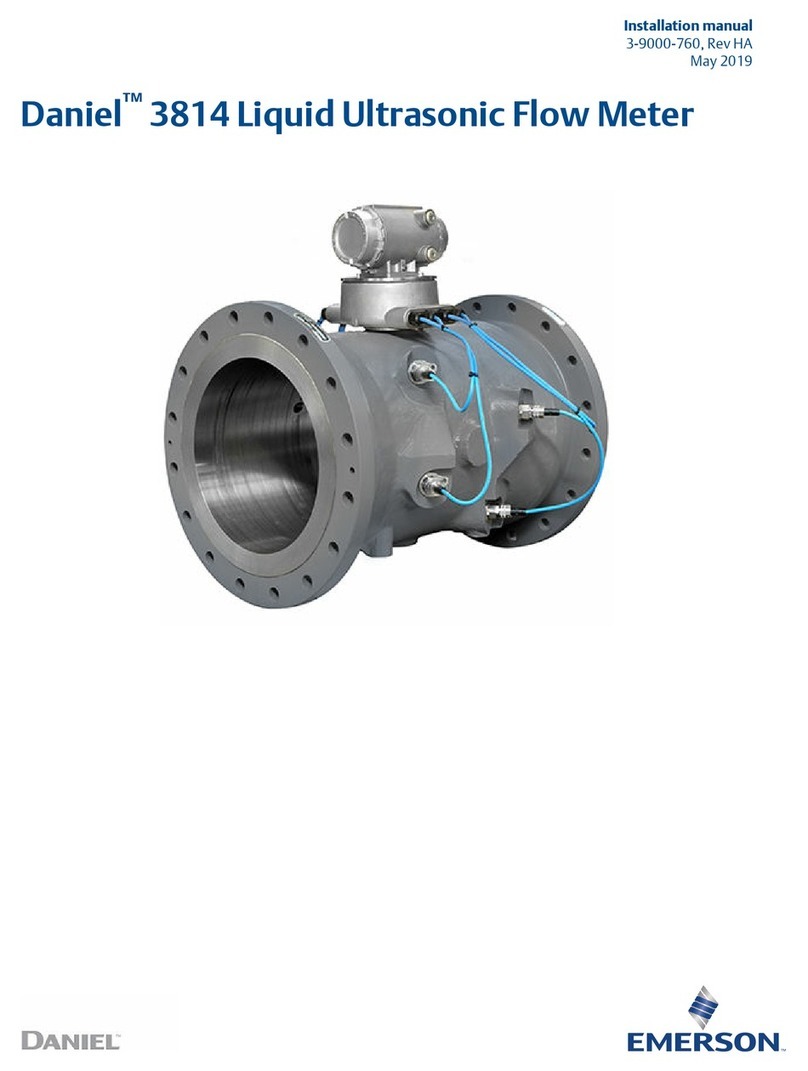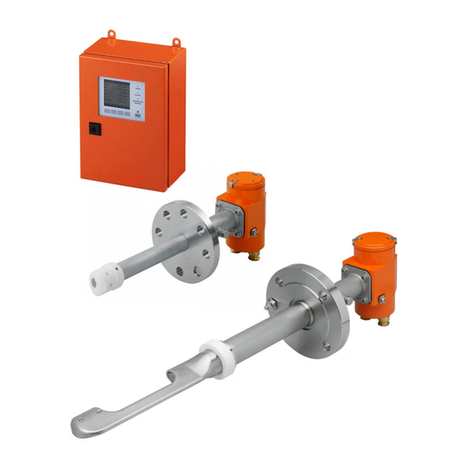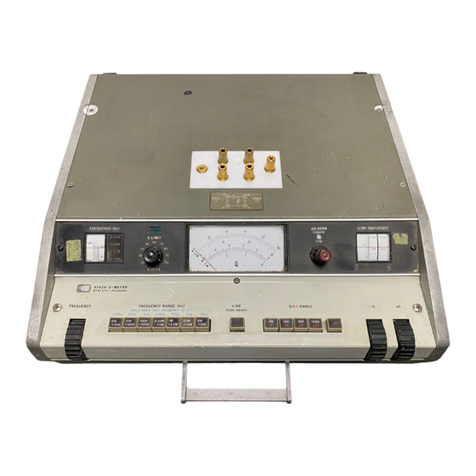Novanta gem with smd24 User manual

ENGINEERED BY LASER QUANTUM
gem with smd24
User Manual

TABLE OF CONTENTS PAGE |2
Table of Contents
Table of Contents ...................................................................................................................................................... 2
Warranty Information............................................................................................................................................... 3
Summary of EU compliance ...................................................................................................................................... 4
Introduction .............................................................................................................................................................. 5
Laser Safety ............................................................................................................................................................... 6
System Specifications................................................................................................................................................ 7
PSU Configuration Drawings ..................................................................................................................................... 9
Laser Operation....................................................................................................................................................... 10
Cooling Requirements and Power Consumption.................................................................................................... 14
Power Consumption................................................................................................................................................ 14
Laser Maintenance.................................................................................................................................................. 15
Liability .................................................................................................................................................................... 16
Customer Support
Should the laser fall below acceptable specification performance, please contact our service and support
rectify the problem remotely. If this is not possible, they will provide you with a Return Material
Authorisation (RMA) Form and instruction on how to package and return the laser safely to us for
assessment.
For our commitment to the ‘Waste Electrical’ compliance requirements we recommend you to return your
systems back to the manufacturing site at end of life.
This take-back service will enable us to put the systems beyond use and disseminate the parts into
recycling waste streams.
PLEASE DO NOT RETURN THE LASER WITHOUT PRIOR CONTACT WITH AND AGREEMENT FROM OUR SUPPORT TEAM.
Laser Quantum UK
Emery Court, Vale Road
Stockport, Cheshire
SK4 3GL
UK
TEL: +44 (0) 161 975 5300

WARRANTY INFORMATION PAGE |3
Laser Quantum USA
47673 Lakeview Blvd
Fremont
CA 94538, USA
USA
TEL: +1 510 210 3034
Laser Quantum Germany
Max-Stromeyer-Str. 116
78467 Konstanz
Germany
TEL: +49 (0) 7531 368371
Warranty Information
Laser Quantum provides a return to base warranty across all our product ranges. See contact details in the Support section.
Warranty cover for the laser is subject to proper use, care and protection from mistreatment. Examples of mistreatment
include but are not limited to any of the following:
•Any deviation from the instructions laid out in the Operating Manual
•Opening the product or breaking the warranty seals
•Operation in any hostile environment as outlined in the Operating Manual
•Any damage due to operation in unclean environments
•Any substantial mechanical shock
•Any damage through static discharge (this will not occur under normal operation)
The definition of mistreatment and its applicability to the warranty is at the reasonable discretion of Laser Quantum.
Laser Quantum’s obligation under this warranty is limited to the replacement or repair of the product which having been
returned to the factory is found to be defective, and where the defect was not caused by factors external to the product.
Any replacement part/product is under warranty for the remainder of the initial product warranty period.

SUMMARY OF EU COMPLIANCEPAGE |4
Summary of EU compliance
Reference
DOCEU-GEM-1; DOCEU-GEM-2; DOCEU-GEM-4;
Manufacturer Details
Laser Quantum Ltd, Stockport, UK
Product name and description
gem 473/532/561/660/671nm DPSS laser + mpc6000 power supply;
gem 473/532/561/660/671nm DPSS laser + smd12 power supply;
gem 640nm DPSS laser + smd24 power supply;
The declaration is issued under the sole responsibility of the manufacturer and relates to following regulations
and technical standards.
Directive 2014/35/EU Low Voltage Directive (LVD)
EN 60825-1:2014: Safety of Laser Products.
EN 61010-1:2010+A1:2019: Safety requirements for electrical equipment for measurement and
laboratory use. General requirements.
Directive 2014/30/EU Electromagnetic Compatibility (EMC) Directive:
EN 61326-1:2013: Electrical equipment for measurement, control and laboratory use -EMC
requirements. General requirements for immunity and emissions.
Meeting the requirements for the electromagnetic environment.
Directive 2011/65/EU Restriction of the use of certain hazardous substances (RoHS)
Restriction of the use of certain hazardous substances in electrical and electronic equipment and the
amended Annex II – Directive 2015/863/EU
Further information on Declaration of EU Conformity and product compliance available on request.
Warning: Serious Personal Injury
Failure to read this manual carefully before operating the laser may result in catastrophic damage to the system which
may void the warranty.

INTRODUCTION PAGE |5
Introduction
The gem is a Diode-Pumped Solid-State (DPSS) laser system emitting light in the visible region of the spectrum at 640 nm. It
is a Class 3b or Class 4 laser product. This manual describes the set up requirements and operational procedures to ensure
safe operation of the system..
Operational Requirement: Electrical Specification
The smd24 Power Supply Unit (PSU) requires:
Input Voltage 12 V DC Acceptable range 11 V to 14 V (Ripple 1% peak to peak)
Input Current 8 A Minimum of 8 A must be available from the external source
Important Note: The centre pin of the input connector is positive and the external DC source output shall not be
referenced to mains ground. If the system experiences significant power interruption (surges or dips) it will restart and
revert to a safe standby safe mode
Electrical Specification: Environment
Optimal Operating Temperature Range – Laser Head 22ºC to 37ºC
Maximum Operating Temperature – Laser Head 40ºC
Maximum Operating Temperature – PSU 60ºC
For optimal performance, the laser head should be mounted onto an appropriate heatsink in a stable environmental
temperature. The heatsink requirements will depend on the ambient temperature of the operating environment and the
operating power of the laser (section 6).
In the event of the laser head or PSU over-heating, a controlled shut down of the system will occur (Section 6). The system
can only be restarted once it has been cooled to a safe temperature.
Temperature Range: 5ºC to 45ºC
Humidity: Non-Condensing
Warning: Serious Personal Injury
Use of controls or procedures or performance of procedures other than those specified herein may result in hazardous
radiation exposure. Use laser ONLY for the originally intended requirement such as for scientific research, industrial
application or for oem integration.

LASER SAFETY PAGE |6
Laser Safety
The gem is a Class 3b or Class 4 laser product, this is denoted by the laser warning label affixed
to the laser head. A further label also appears adjacent to the laser aperture.
A further label also appears adjacent to the laser aperture:
When operating the laser, those in the environment must adhere to the following instructions to avoid eye damage and
prevent the risk of fire:
•Laser safety goggles must be worn at all times when the laser is in operation.
•Always ensure the beam is safely collected in a suitable beam stop or that the laser is disabled when not in use.
For a full description of laser safety procedures, the user is referred to Declaration of Conformity standards plus:
• FDA Code of Federal Regulations (CFR) Title 21 Subchapter J section 1040.10 Laser products
• American National Standards for Safe Use of Lasers – ANSI Z136

SYSTEM SPECIFICATIONS PAGE |7
System Specifications
A full list of parts supplied with the laser systems appear in Section 3 along with the dimensions (mm) and weights (kg).
These measurements should be referred to whilst integrating the system.
Parts List
The gem laser system comes complete with:
•gem laser head
•smd24 Microprocessor Controlled Power Supply Unit (PSU)
•Umbilical Cable – to connect the laser head and PSU
Important Note: Laser head and PSU are NOT interchangeable and must remain paired to meet specification.
Pairing with another Laser Quantum PSU should not be attempted as this may damage the laser.
Depending on the purchase specification, some or all of the following items may also be included:
•External Power Supply Source (Mains AC to 12 V DC Desktop Module)
•IEC Mains Lead
•Interlock Dongle – to enable the laser system (Green spot on casing and Green LED)
•RemoteApp™ software suite & Operating Manual – delivered on a USB flash drive
System parts and accessories that meet manufacturer’s specification MUST only be used. DO NOT replace the IEC Mains
Lead with alternative inadequately rated leads.

SYSTEM SPECIFICATIONS PAGE |8
Weights and Dimensions
gem laser head Weight: 0.75 kg
smd24 PSU Weight: 1.2 kg

PSU CONFIGURATION DRAWINGS PAGE |9
PSU Configuration Drawings
Figure 4-1
Warning: Serious Personal Injury
The Gem laser contains components which can be damaged if exposed to an electro-static discharge. Ensure the connector
pins on the back of the laser head are never exposed to an electro-static discharge.

LASER OPERATION PAGE |10
Laser Operation
Switching the laser “on”
1Ensure the smd24 is not powered (i.e. 12 V DC source is switched off).
2Connect the Laser Umbilical Cable to the port marked ‘Laser Umbilical’ on the smd24 before connecting the other
end to the laser head. Tighten the locking posts on the screws at both ends so they are finger tight.
3Switch on the 12 V DC source, this should illuminate the smd24 green power LED. At this stage the thermal control
circuitry is activated but no laser emission should occur.
4The analogue Control port (see Figure 4.2) is multi-functional as it has connections for Interlock, Enable Switch and
Laser Power Control/Modulation. The Interlock must be closed to allow the laser to operate and this can be
achieved using the supplied green-spot Interlock Dongle.
5Depending on the Start Up Conditions set for the system the laser may now start to emit laser light..
Power Mode
The laser operates in Power mode. The laser power is constant, and a feedback control loop maintains the power at the
level requested by the operator via the RS232 port.
Current Mode (where available)
The pump diode current as selected by the operator is a percentage of the total pump diode current available. The
requested current remains constant however, the power may drift due to environmental changes.
Switching the laser “off”
The laser is switched off by: Removing the interlock dongle; Sending the serial command ‘OFF’. The gem systems MUST
NOT be positioned so that it is difficult to operate the disconnecting devices.
Front Panel Controls
The mode of operation can be changed by the operator using the serial commands ‘CONTROL=POWER’ to select power
mode or ‘CONTROL=CURRENT’ for current mode.
Warning: Serious Personal Injury
If a red spot Interlock Dongle has been supplied with the laser system this will over-ride the need to press the Enable
button. Turning the Key Switch to the ‘on’ position will start the laser

LASER OPERATION PAGE |11
Control Port – Functionality
The SMD24 can be operated directly via the Control port (see Fig 4-1) by applying 0 to 5 V, interlocks and push button in
accordance with the diagrams in this section.
9-way Function Table and Pin-Out Diagram
Pin Function
1 +5 V rail (source)
2 Interlock (connection 2) and Enable LED anode
3 Enable switch (connection 1)
4 Diode current enable (connect to pin 1)
5 Ground (GND)
6 Interlock (connection 1)
7 Enable LED cathode
8 Enable switch (connection 2)
9
Ground (GND)
The remote Interlock, Enable and Enable LED can be wired in accordance with the diagrams below [Fig 5-1 & Fig 5-2], to be
used as part of a laboratory interlock safety circuit. If either Interlock is broken the system will shut down, the Enable
button must be pressed to restart the system.
Connections to the control port shall be “potential free” i.e. isolated from mains voltage by a barrier rated at 3 KV (e.g.
Double Insulation, Etc).
The combined electrical resistance of the “Enable Switch”, “Interlock” and associated wiring shall be less than 5 ohms.
If a solid-state device such as on opto-isolator is used as the switching element(s), the total combined voltage drop must
not exceed 500 mV.
The current through the “Interlock” and “Enable Switch” circuitry is less than 100 mA. The LED current source is 10 V via a
540 R resistor.
Figure 5-1 Figure 5-2 Figure 5-3
The PSU has its own 5 V source (pin 1) which must be shorted to pin 4 to allow full Power Mode operation. Pin one must be
linked to Pin 4.

LASER OPERATION PAGE |12
RS232 Port – Functionality
Control of the laser can be achieved via the RS232 port using a terminal emulator such as HyperTerminal or PUTTY. This
allows the operator to:
•Turn the laser on/off
•Control the laser power
•Query information such as laser head/PSU temperature
•Check the laser status
It is necessary to have the Interlock and Enable switches closed via the Control port in order to enable the laser, prior to
controlling the laser through the RS232 port. Pins 1 and 4 of the Control port must be shorted together to allow maximum
current to be set by the RS232 commands.
The RS232 port uses the standard 9-way connector pin configuration:
Pin 2 TXD: RS232 – Transmit
Pin 3 RXD: RS232 – Receive
Pin 5 GND – Ground
Port settings are:
Baud Rate: 57,600
Parity: None
Stop Bit: 1
Hand Shaking: None
The operator must wait for a response from the PSU before sending the next command. A response is any text string
(including null) followed by a carriage Return, Line Feed.
The system has been tested for compliance using 3m long serial cable. If a serial cable of over 3 meters in length is used
compliance of the system may be compromised. Therefore, it is recommended that if this is required, optical isolation
should be used.
RS232 Port – Serial Commands
Serial Command Function
OFF Disables the laser, regardless of the interlock status
ON Enables the laser subject to Interlock and Enable Switch
status
CONTROL=CURRENT Sets the Current mode on
CONTROL=POWER Sets the Power mode on
CURRENT=###
This sets the current to the diodes as a % of the maximum
e.g. to set acurrent of 85% of maximum send CURRENT=85,
followed by striking the RETURN key.

LASER OPERATION PAGE |13
POWER=###
This sets the output power of the laser. For example, to set a
power of 2800 mW, send the string POWER=2800, followed
by striking the RETURN key.*
POWER? Returns the power of the laser (read from the internal
photodiode)
STEN=YES / NO Enable (YES) or disables (NO) laser as default at start-up.
This serial command must be followed by WRITE
STPOW=### ### is the optical power in mW. Sets the default start-up
power. This serial command must be followed by WRITE
ACTP=### ### is in mW. Recalibrates the APC mode (See section 5)
WRITE Stores APC calibration, STEN and STPOW in memory
LASTEMP? Returns the temperature of the laser head in degrees
centigrade
PSUTEMP? Returns the temperature of the PSU in degrees centigrade
STATUS? Returns the status of the Interlock
TIMERS?
Returns the timers of the laser and PSU:
Time=#######.# Total time the system has been powered
Laser Time=#######.# Total time the diodes have been
powered
Laser > 1A Time=#######.# Total time the diodes have
been powered >1 A
VERSION? Returns the timers of the laser and PSU:
* A minimum % current threshold level is required to achieve laser emission. This threshold varies from laser to laser and is
also dependent on the laser power. **The system has been tested for compliance using a 3 m serial cable. If a serial cable
>3 m is used, compliance of the system may be compromised unless optical isolation is used.
RemoteApp
Using Laser Quantum’s unique RemoteApp software suite the laser can be controlled via the RS232 port. The application is
supplied on a USB Flash Drive and should install automatically. Alternatively, it can be downloaded from
www.laserquantum.com. Follow the on-screen prompts to install the software onto the computer. RemoteApp includes a
comprehensive instruction manual which can be accessed via the ‘Help’ and ‘Contents’ tabs.
The RemoteApp can also be used if a remote connection is required by our Service & Support Centre and is a powerful tool
if performance optimisation is required.
Re-calibrating the laser power
The laser can be recalibrated at any time during its use to ensure the APC mode is in good agreement with any external
power meter device. Recalibration is a simple process that takes place via the RS232 port. The procedure for recalibration
requires the RS232 port to be configured for use with a terminal emulator (Section 5). The following procedure must be
followed:
1Select an intermediate power that the laser is capable of reaching. Set the laser to this power by typing the
command POWER=###. “###” represents this intermediate or characteristic operating power level in mW.
2After a period of 5 minutes, measure the actual power using a trusted, external power meter.
3Type the command ACTP= [external power meter reading in mW].

COOLING REQUIREMENTS AND POWER CONSUMPTION PAGE |14
4Confirm that the laser has adjusted its power such that the external power meter now reads ###mW within a few
mW.
5If necessary, repeat steps 3 and 4 until the calibration agrees.
6Once accepted, type the command WRITE to store the new calibration.
Important Note: Take extra care to remove back-reflections to the laser. Any magnitude of back reflection may
disturb the resonant cavity and will affect the APC feedback control loop.
Cooling Requirements and Power Consumption
Cooling Requirements
The laser has a characteristic warm-up period before it reaches specification; this time depends partly on the heatsink to
which it is attached. However, the typical warm-up time is 10 minutes from switch on.
In order for the laser to perform to specification, it must be adequately heatsinked. Operating the laser on an inadequate
heatsink will adversely affect its stability and may result in thermal shutdown of the laser head or reduction in beam
power. In normal laboratory conditions, a heatsink with dimensions 400 x 400 x 10 mm should be suitable for the laser to
operate in accordance with its specifications. Depending upon environmental conditions and power of the laser, additional
cooling aid might be required (e.g. TEC, forced air cooling, water cooling). For further information on heatsinking your laser
system, please consult your sales representative who may be able to provide a heatsink solution.
gem laser head
Once the maximum operational temperature for the laser head (see Section 1) has been reached, one of two things will
occur: To ensure the correct cooling arrangement the flow direction should be as follows:
1The current to the diode will immediately be switched off and the laser system will need to be restarted once the
temperature has been restored to normal
2If de-rating is enabled the current will gradually be reduced to zero in order to try to allow the laser head
temperature to stabilise. If the current does reach zero the system will need to be restarted. The effects of de-
rating are shown in the table below:
Current Laser Head/Laser OVERTEMP
LED
Colour of Laser and PSU
text on LCD
Set by user Off Orange
Begins to de-rate Flashes Flash Red and White
Reduced to zero On Flash Red and White
smd24 PSU
A similar arrangement occurs for the PSU once the maximum operating temperature (see Section 1) has been reached.
Important Note: The indicator LED in this instance is marked ‘PSU OVERTEMP LED’.
Power Consumption
The power consumption shown is that which is drawn at the plug from the mains supply in both the Maximum and Typical
states. The Maximum power will usually be drawn at start up and the typical power is when all temperatures are stabilized,

LASER MAINTENANCE PAGE |15
and the system is operating at the specified power. Peak values are shown in all cases and efficiencies will vary between
systems of different wavelengths.
Maximum at 240 V supply – using the supplied External Power Supply Source:
120 W
At the 12 V input the SMD24 can draw maximum of 8 A
Laser System:
Wavelength (nm) Laser System Output (mW)
473 - 50 175 500
532 50 250 750 2000
640 500 - - -
660 50 125 375 1000
671 50 80 250 750
Power Consumption (W)
(Maximum) 43 45 60 75
Power Consumption (W)
(Typical) 33 35 45 55
Example: 473 nm system, operating at 175 mW will consume 60 W maximum and 45 W typical
The heat dissipation of the laser head is approximately 60% of the total power consumption.
Laser Maintenance
If the gem is operated in a smoky or dirty environment, occasional cleaning of the laser window may be necessary. To
perform this procedure, the laser must be turned off and, using optical cloth dampened with research grade methanol, the
laser window must be gently wiped.
•Always follow the instructions given in this Operating Manual
•Always use the PSU which was delivered with the laser and do not attempt to control the laser with any other PSU
•Ensure laser is firmly fixed to an appropriate heatsink to allow efficient heat dissipation from the laser head and
ensure a thermal equilibrium is achieved. The laser should be held in an environment with temperature stability
±0.1°C to achieve the marketed specifications. Use the laser head power consumption figures to help determine
what heat-sink dissipation is needed or speak with your sales representative
•Never touch the connector on the laser head with anything other than the Umbilical cable provided and always
follow the connection instructions in this Operating Manual
•Do not open the laser head or PSU; this will immediately invalidate the warranty
•Do not subject the laser head to mechanical shock; if severe this can cause mis-alignment of the laser cavity
•Do not allow the output window of the laser to be touched as this may damage the precision optical coatings
used. Avoid very dirty atmospheres where dirt may settle on the window
•Do not operate or store this laser system in very humid or damp environments
Guaranteed specification will only be achieved at the ordered power level. Laser calibration may not always be accurate at
very low powers – for alignment purposes seek external attenuation.

LIABILITY PAGE |16
Liability
Laser Quantum accepts no liability for damage to persons or property caused by incorrect or unsafe use of any of its
products; this is the sole responsibility of the user. Proper safety regulations for the use of these products must be
observed at all times.

Engineered by Laser Quantum & ARGES, part of Novanta
125 Middlesex Turnpike, Bedford, MA 01730, USA
Phone: +1 (781) 266-5700
Email: [email protected]
Website: https://novantaphotonics.com
May 2022
©2022 Novanta Corporation.
This manual suits for next models
1
Table of contents
Other Novanta Measuring Instrument manuals
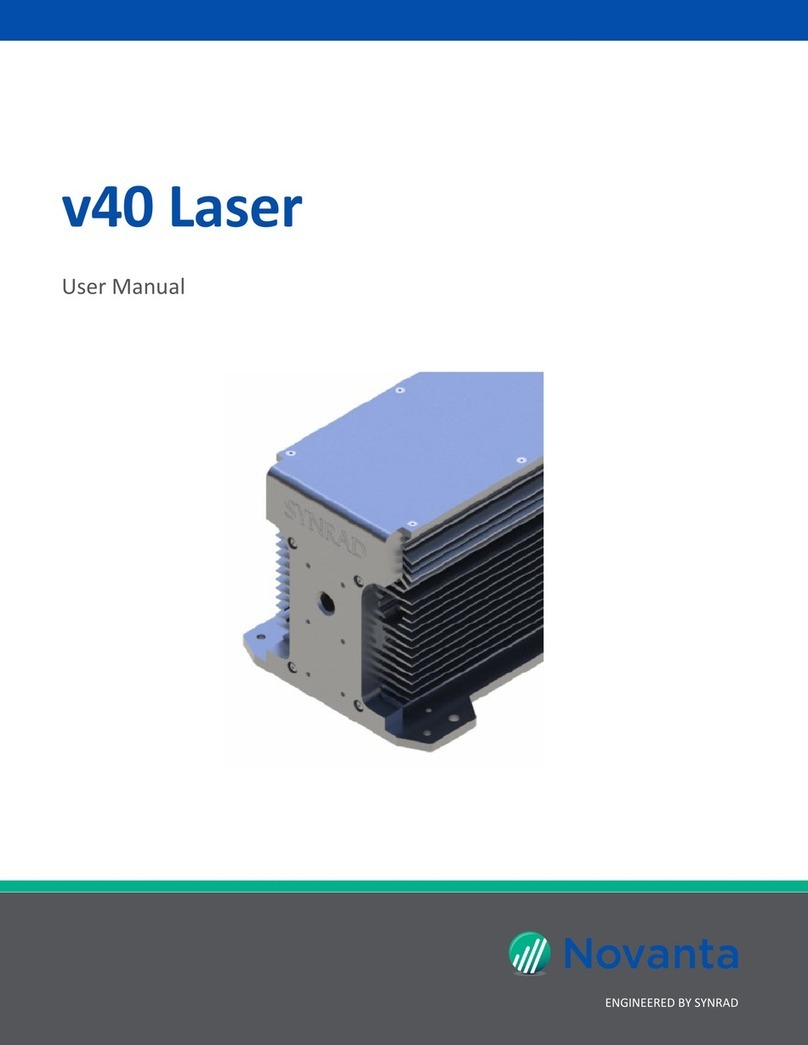
Novanta
Novanta v40 User manual
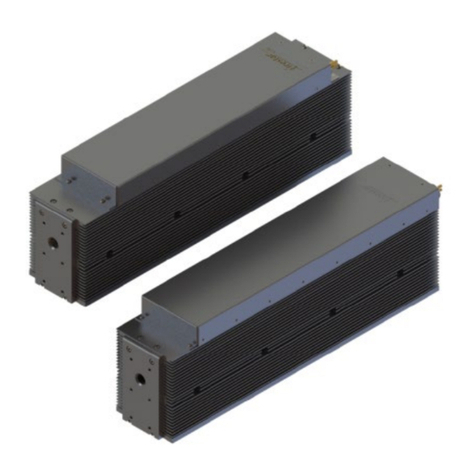
Novanta
Novanta vi30 User manual

Novanta
Novanta Synrad ti Series User manual
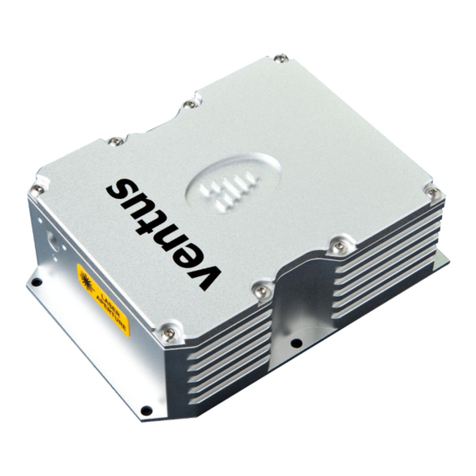
Novanta
Novanta ventus with mpc6000 User manual

Novanta
Novanta SYNRAD Pulstar p100 User manual

Novanta
Novanta 32-1 Laser User manual

Novanta
Novanta p400 OEM Series User manual

Novanta
Novanta ATI Axia80 User manual

Novanta
Novanta v30 User manual
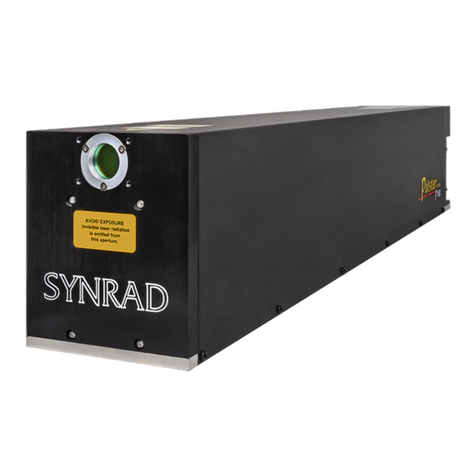
Novanta
Novanta SYNRAD Pulstar p100 User manual


